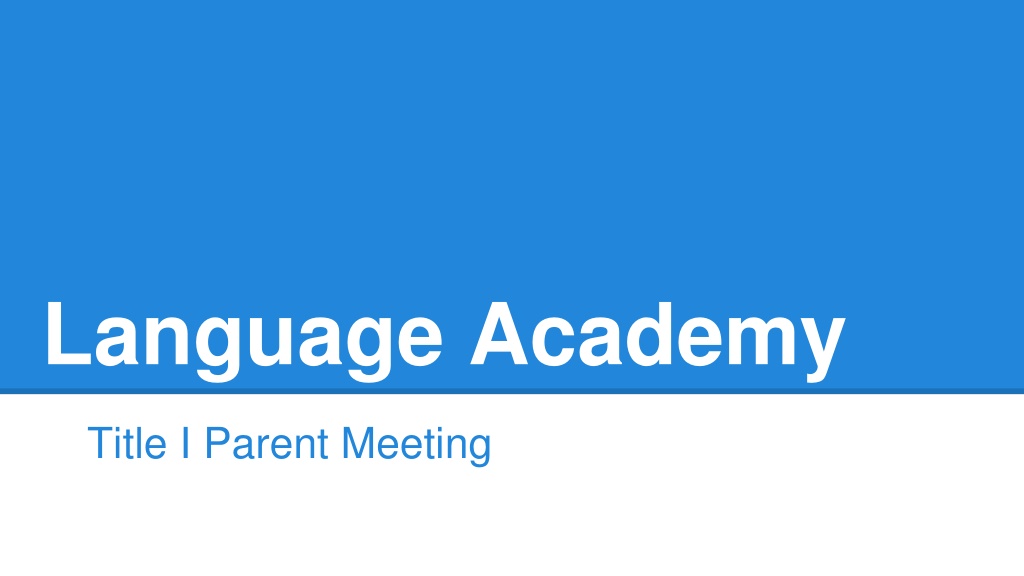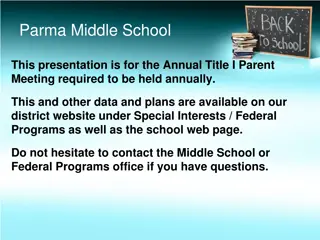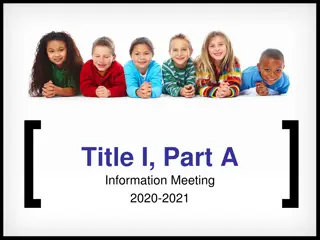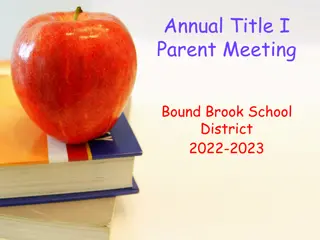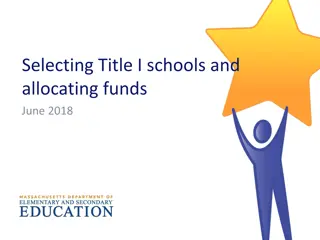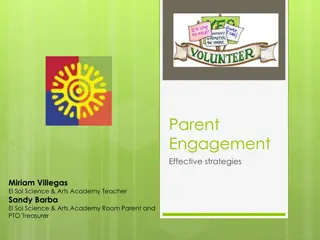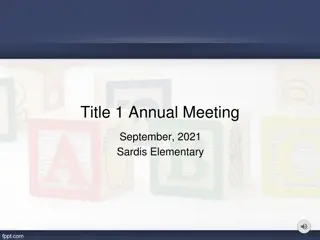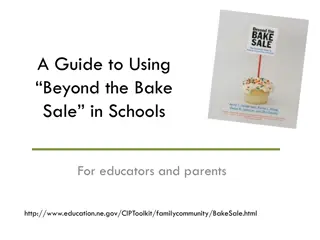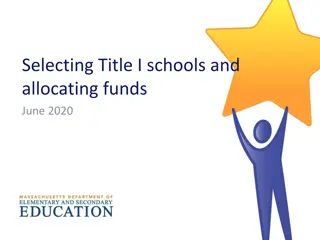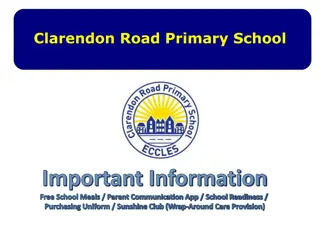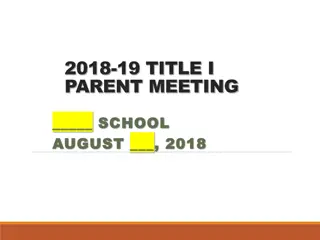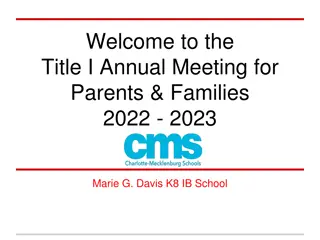Understanding Title I Schools and Parent Involvement
The Elementary and Secondary Education Act of 1965 introduced Title I schools to provide additional federal funding to support students from low-income families, ensuring fair access to quality education. Title I schools have specific requirements, including maintaining highly qualified staff, involving parents in policy reviews, and developing plans for student achievement. This article also delves into how Title I funds are spent, what children will learn in such schools, and the assessment methods used to track student progress.
Download Presentation

Please find below an Image/Link to download the presentation.
The content on the website is provided AS IS for your information and personal use only. It may not be sold, licensed, or shared on other websites without obtaining consent from the author. Download presentation by click this link. If you encounter any issues during the download, it is possible that the publisher has removed the file from their server.
E N D
Presentation Transcript
Language Academy Title I Parent Meeting
What is Title I? The Elementary and Secondary Education Act of 1965 established the following: All children should have fair and equal access to a high-quality education All children should have the opportunity to be proficient in state academic achievement standards. Title I schools are identified by the percentage of students who are at or below a specific socioeconomic level. Title I schools qualify to receive additional federal funding under this act.
What requirements are there for Title I schools? 1. To maintain a highly qualified staff that is dedicated to providing students with an excellent education. 2. To work with our parents and guardians to conduct an annual review of our Parent Involvement Policy, and to revise it as necessary 3. To work with our parents and guardians to conduct an annual review of our Parent/Student/Teacher compact, and to revise it as necessary 4. To develop an annual Single Plan for Student Achievement which identifies how we support students 5. To communicate with parents effectively, and to give required notifications
How Our School Spends Title I Money 1. Parent Involvement Parent Education Opportunities to deepen understanding of DL Programs, Supporting Parents to attend events (babysitting, transportation, refreshments) 1. Academic Support CCCS standards-based supplemental curriculum Support staff to reinforce and expand on learning opportunites
What will my child learn this year? In our 1:1, blended learning environment, all students will work toward mastery of their grade level standards. The California Common Core Standards for all grade levels can be found at: http://www.cde.ca.gov/re/cc/
Assessments Formative: Teacher check students understanding of their learning throughout the school day and week.We use this information to decide what to do next. Summative Chapter tests, unit tests, and District Benchmark exams provide more comprehensive information on students overall progress. State tests CVUSD students in grades 3-8 complete CAASPP exams each spring. One of these exams, the Smarter Balanced assessment, is a computer- based assessment that was given last spring for the first time
YOU Have the RIGHT to be INVOLVED, and WE SUPPORT that RIGHT!!!
Ways for Parents and Guardians to be involved in our school: Be present at drop off and pick up times, and report any concerns to a staff member Communicate with your child s teacher Attend events such as Coffee with the Principal and Science Night Complete Parent Surveys and send them in on time Participate in the PTA Attend English Learner Advisory Committee (ELAC) meetings Run for School Site Council Make sure your child eats breakfast every day Monitor your child s progress, and let the teacher know if you have concerns Take part in our Parental Involvement Policy revision process beginning in January, 2016
